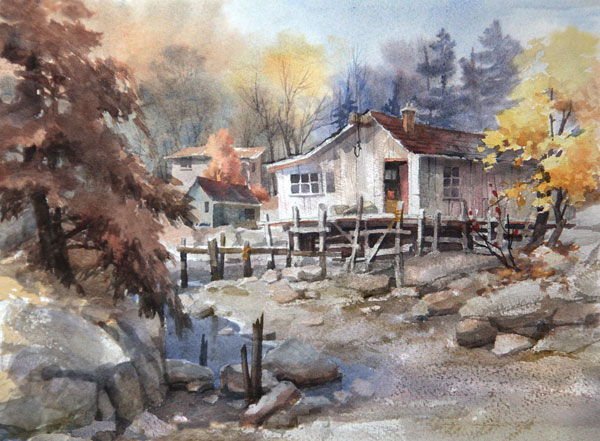Painting Tips: The Value of Hard and Soft Edges

Johannes Vloothuis is back with more expert advice that will help you better understand how to paint. This time he is tackling the timeless subject: painting edges.
Learn how to handle edges within your paintings in a variety of mediums, and then see Johannes in action in his LIVE Paint Along workshops!
Painting Edges: Tips on the Value of Hard and Soft Edges
by Johannes Vloothuis
Handling edges is a skill that all fine artists will need to learn sooner or later. Edges that are out of focus are vital in paintings in order to create the 3D illusion of making things look like they recede in a landscape painting, for example. Edges that are blurred make things appear they are moving.
The handling of edges is to be applied in all mediums, although some are more cooperative than others. For example, with pastels all you need to do is massage the dust with your finger and you can achieve any degree of softness, whereas in acrylics the paint dries too fast and it’s impossible to blur, like with oils. Watercolor requires experience to know exactly when to apply the pigment to the wet paper.
Painting Tips for Artists
There are three kinds of edges in all mediums:
Diffused Edges
The contour of forms can become completely lost, leaving little or no definition. Use diffused edges for the following to:
• Indicate foliage in the last plane in your background
• Create ethereal cumulous clouds
• Create realistic waterfalls that appear to be moving
• Indicate crashing waves in seascapes
Soft Edges
The edge is recognizable, but blurry.
• Distant trees and evergreens in backgrounds
• Distant hills
• Things in the peripheral areas of a painting
• Water reflections
Hard Edges
Clearly defined with no sense of being out of focus.
• Rocks
• Buildings
• Rocky mountains
Advice on how to achieve soft or diffused edges:
Oil and Pastel:
Massage the paint to the degree of blurriness desired. These two mediums are very easy.
Watercolor:
1) Apply water to the paper.
2) Wait about 5 minutes for the water to be absorbed and/or until the paper is no longer glossy.
3) Add just enough water to create pasty (not runny) pigment. If necessary suck the excess water out of the brush by squeezing the bristles where they meet the ferrule while holding the brush vertically to the paper. Note: Rough paper is more cooperative than cold-pressed paper when it comes to controlling soft edges.
Acrylic:
Scumble the adjacent color (such as the sky on the edges of trees) and lightly feather it in until the transition creates the blurred contour.





Have a technical question?
Contact UsJoin the Conversation!